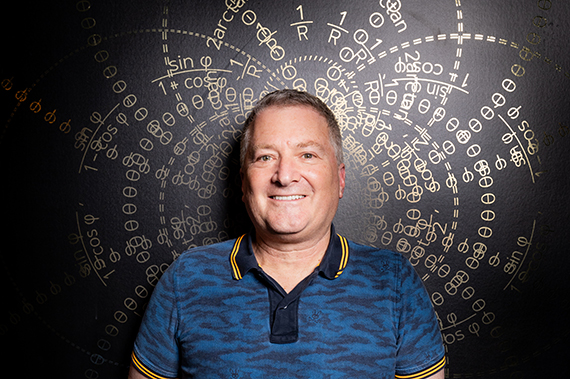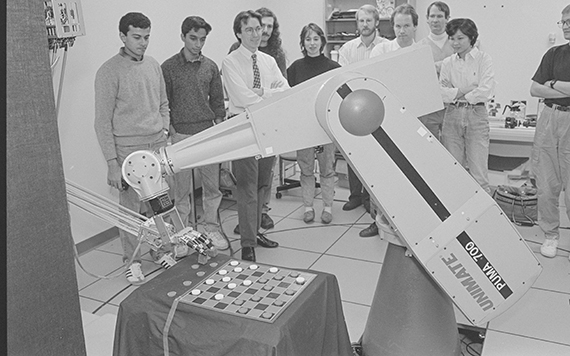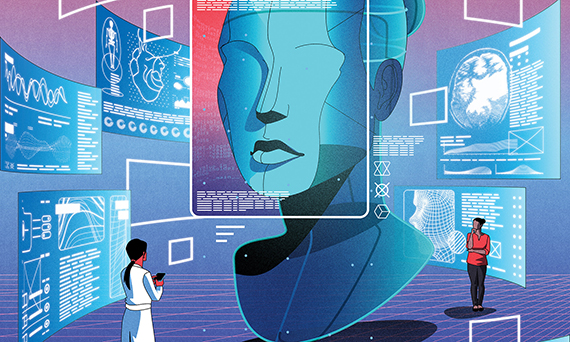August 12, 2024

Sphere Entertainment
Dear members of the Hajim School community,
I am always amazed by the incredible careers that Hajim School alumni go on to pursue, and one of the coolest jobs is held by Stu Elby ’82 (optics), the senior vice president of advanced engineering at MSG Ventures. Stu helped lead the way on technical advancements to bring to life Sphere, the 366-foot-tall live entertainment venue in Las Vegas that is revolutionizing the concert experience.
Housed inside the world’s largest spherical structure, the performance venue features countless technical marvels. Its creative canvas spans 160,000 square feet of LED panels positioned precisely on the dome to produce a seamless image. The Sphere team even developed a one-of-a-kind camera system to record visuals for the curved display.
Stu has been a longtime supporter of the Hajim School through our Dean’s Advisory Committee and hosted us for a visit in the spring. It was incredible to see the technology he worked so hard to help create in action.
Read a profile of Stu from the latest edition of Rochester Review.
THE DEPARTMENT OF COMPUTER SCIENCE MARKS 50 YEARS OF REVOLUTIONARY PROGRESS

University Libraries / Department of Rare Books, Special Collections, and Preservation
It’s been 50 years since Rick Rashid ’80 (PhD) became the first computer science student to set foot on campus, and it is remarkable how much the department has grown, changed, and achieved since then. A feature story in the new edition of Rochester Review looks at how both the department and the field of computer science have evolved over the last five decades.
What started in 1974 as a small, ambitious program led by charismatic founding department chair Jerry Feldman ’60, quickly began making an outsized impact, producing seminal works in artificial intelligence, systems, and theory. Over the years as the department expanded to undergraduate education, moved to new buildings, and diversified its student body, it managed to maintain the unique qualities that make it such a special place to study.
Read about the department’s evolution and hear from some of the alumni and faculty who have been along for the ride.
Additionally, Rick and his wife Terri recently established the Computer Science Alumni Endowed Fund to provide financial support for student programming, experiential learning, or professional development at the discretion of the chair of the computer science department in consultation with the dean of the Hajim School. This fund was established to permanently celebrate and recognize the computer science department and all computer science alumni. By providing a vehicle for anyone to contribute financial support to our bright, talented, and ambitious CS students at the university, Rick and Terri have offered the opportunity for anyone to make a gift that will last for generations.
AI IN MEDICAL DIAGNOSIS AND TREATMENT

Illustration by Denis Freitas
Clinicians, computer scientists, and ethicists are working across the University to incorporate reliable and ethical AI into medical diagnosis and treatment. One of the faculty members leading research in this area is Chris Kanan, an associate professor of computer science who helped develop the first FDA-cleared pathology tools.
Chris began working with the company Paige.AI in 2018, with the goal of developing an AI tool that could assist pathologists in diagnosing cancer with unprecedented speed and accuracy. To create such a tool, however, required more than developing sophisticated algorithms. It also meant integrating AI into workflows and ensuring its reliability across various settings. Chris’s work is highlighted in a new Rochester Review feature.
Recently, Chris was co-author of a major study in Nature Medicine demonstrating Paige’s Virchow model built for clinical grade cancer detection showcasing state-of-the-art performance across 16 types of cancer, including seven rare cancers. The Associate Press looked at how the model could create novel applications in cancer diagnosis that previously weren’t possible due to limited data.
Have a great week!
Your dean,
Wendi Heinzelman